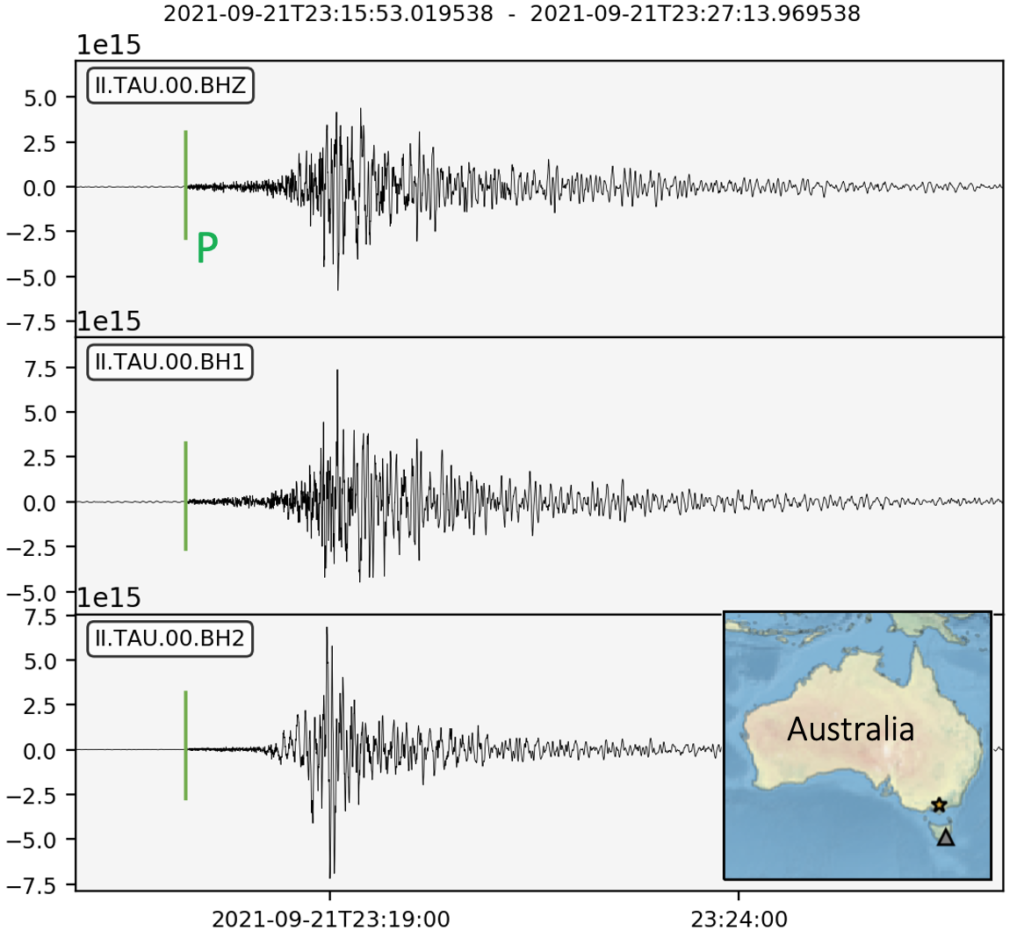Seismograms (Figure 1) are time series that represent the record of ground motion detected by a receiver due to the passage of a seismic event (such as volcanic activity, landslides, anthropogenic seismicity… the list goes on!). By carefully examining these seismograms, we can investigate the origin of the seismic source (e.g., its location and nature) and the characteristics of the medium through which those waves have travelled.
What is an EarthQuake?
An earthquake is the movement of the ground caused by the sudden release of energy stored in the rocks. The energy radiates from the seismic source travelling as elastic waves and causes the ground to vibrate.
There are different reasons why we have earthquakes, in particular because the Earth is a very dynamic planet! Different types of forces (stress-field) drive the deformation we observe at the surface, creating a perfect condition for accumulation of energy in the crust. When the energy overcomes the limit of deformation, the rocks may abruptly fracture and move, causing an earthquake.
How can we decipher the seismogram into properties of the Earth structure?
Well, we can think of a seismogram as a complex overlapping of effects related to the seismic source, instrument, and the Earth’structure in between the source and receiver. Meanwhile we have a good knowledge about the instrumental response of the seismometer that is recording an earthquake, the source and Earth’ structure are more challenging to be determined, thus being the object of investigations of all seismologists.
On another post, I will describe a bit more about the waveform modelling (how we can mathematically decompose a seismogram), and introduce to you some fundamental equations.
